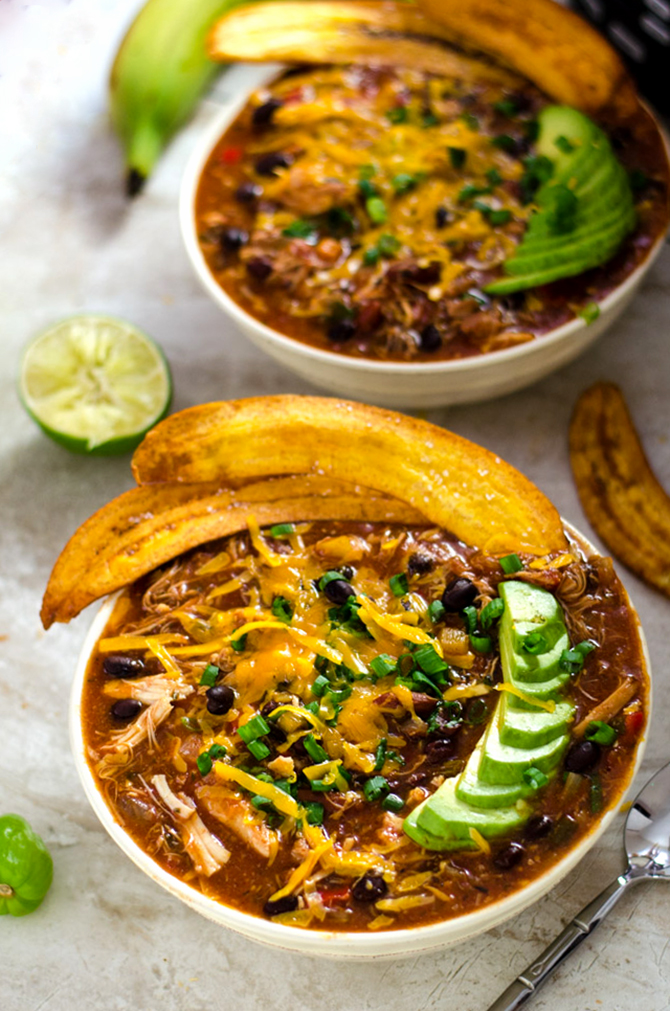By expanding the traditional 50-strong list to include 100 restaurants for the first time, Latin America’s 50 Best Restaurants suddenly became more geographically inclusive.
The new list, unveiled recently in Mérida, Mexico, not only recognised restaurants in Central America – from Guatemala, El Salvador and a cluster of additions in Panama – but also mapped restaurants in cities that had never before been publicly featured (with the exception of 2021’s Past and Future ranking). Medellín in Colombia, Salta in Argentina, Guayaquil in Ecuador, Santa Cruz de la Sierra in Bolivia, and Belo Horizonte in Brazil, have all now pinned their respective flags to the map.
A small number of new entries featured in the top 50, while Mexico, followed by Brazil, took the crown for most entries overall (18 and 17 respectively). Here’s a look at some of the notable additions in Latin America’s 50 Best Restaurants 2022 you need to start bookmarking.
Nelita, São Paulo
Tássia Magalhães, photo by Amanda Francelino
In just 18 short months, talented Brazilian chef Tássia Magalhães has turned Nelita (39th) into one of the hottest tables to book in São Paulo. Working with an all-female kitchen crew out of the hip Pinheiros district, Nelita’s core is seasonal Italian cuisine using ingredients sourced from small regional producers. With a slew of accolades to her name, including Chef of the Year 2022 by Prazeres da Mesa magazine earlier this month, the Geranium-trained chef creates an 11-course tasting menu named Our Feminine Soul. Those with time constraints must at least try her pasta: we love the delicate caramelle with pumpkin and buffalo ricotta.
São Paulo bonus track: At Charco (35th), chef Tuca Mezzomo’s nine-course tasting menu draws on ingredients from his native southern Brazil.
Diacá, Guatemala City
Photo courtesy of Diacá
While chef Debora Fadul is renowned for her work on the Central American food scene, her restaurant Diacá is the first Guatemalan restaurant to enter the 50 Best list, slipping in at 47th place. In addition, the restaurant bagged this year’s Flor de Caña Sustainable Restaurant Award, while Fadul also forms part of the 50 Next’s Class of 2022 for creating and applying a catalogue of ingredients. Located in the 4 Grados Norte district, she champions revered Guatemalan ingredients such as melipona honey and native maize to create an eight-course plant-based tasting menu that playfully demands diner participation; one star dish is Elote Poporopero, popped corn with confit duck and crackling, dehydrated feta and big-assed ant (the usual translation) salt.
Guatemala City bonus track: Also check out Flor de Lis (51st), whose cuisine is inspired by Popol Vuh, the sacred Mayan text.
Julia, Buenos Aires
Photo courtesy of Julia Restaurante
Constructing a solid CV after working for Gonzalo Aramburu of Armaburu (36th), in 2019 Julio Martín Baez spread his wings to open his first restaurant, his way, and he puts staff first: Villa Crespo-based Julia only opens Monday to Friday. Just he and a sommelier led the charge at Julia Restaurante (50th) back then, prepping, cooking, serving, uncorking and washing up every step of the à la carte and tasting menus. Today the team includes talented head chef Sol Perreti, who makes the most of Argentina’s micro seasons to create fresh-tasting dishes that delight in their interplay with flavours and textures, such as their squid with avocado and white pesto.
Buenos Aires bonus track: Try the katsu sando at contemporary Asian parrilla (steakhouse) Niño Gordo (75th).
Alo’s, Greater Buenos Aires
‘Asteraceae’, a dish with chamomile and endives, at Alo’s, photo by Damian Livivivhe
At his cool bistro located in a well-heeled Buenos Aires suburb, chef Alejandro Feraud has been tempting diners with his farm-to-table menu at Alo’s (53rd) for eight years. He and his team, including head chef Clara Corso, work closely with local producers to ensure as many seasonal ingredients as possible reach the kitchen. The resulting dishes might be boar and beetroot tartar, or scallops with squash and courgette: savour it at the kitchen counter while watching the team exhibit their skills. One recent hit is asteraceae, a dish using members of this flowering plant family such as chamomile and endives. Alo’s also has a great wine cellar, so pick a fun bottle or two, or leave it to the sommelier and opt for the paired tasting menu.
X.O., Medellín
Images courtesy of X.O.
One of Colombia’s most exciting openings of the past 18 months, the latest venture from a culinary trio that’s worked together for 13 years went straight in at No.59. At X.O., Rob Pevitts, Mateo Ríos and Sebastián Marín source ingredients from Colombia’s biodiverse pantry to create 11- and 16-step tasting menus that take diners on a delicious technique-laden voyage. Most proteins are sustainably caught fish and seafood; a must try is guacho, a creamy rice dish of ostión vaca oysters cooked in vanilla butter and 40-month dried prawn sauce, fermented Amazon limonarias ants, chilli peppers and rice foam.
Medellín bonus track: Sambombi Bistró Local also made the list (88th). Try their artichokes with blood sausage ragú and almonds.
Kotori, São Paulo
Tsukune at Kotori, image courtesy of Kotori
Following on from World’s 50 Best Bars success in October, when his Korean watering hole Tan Tan ranked 62nd, talented chef and bartender Thiago Bañares has notched up a second hit with Kotori (65) in trendy Pinheiros. Translating as ‘bird’ in Japanese, his izakaya (Japanese food bar) specialises in chicken yakitori, which diners start salivating over as they watch it being prepared in the glass-fronted kitchen. And, bearing in mind São Paulo is home to the world’s largest Japanese community outside of Japan, this is a legit experience. One of our favourite pairings there is for the crunchiest karaage (Japanese-style fried) chicken in town washed down with melon chu hai – shochu, melon and soda – prepared by bartending ace Grace Kyoko.
São Paulo bonus track: Head to Corrutela (95th) in Vila Madalena for their île flottante, made with jenipapo fruit that gives it a unique blue hue.
Ali Pacha, La Paz
Photo courtesy of Sebastian Quiroga
With a culinary pedigree that stems back to the early days of pioneering restaurant Gustu, Sebastián Quiroga branched out to create a forward-thinking, strictly Bolivian plant-based menu at Ali Pacha (67th) four years ago. Translated from the indigenous Aymara language as ‘plant universe’, Ali Pacha is located in the thick of downtown La Paz, but is thankfully a sea of tranquillity. Diners can enjoy vegan cheese and milk extracted from superfood quinoa, beetroot ceviche or cured watermelon with tarwi and capers from the 11-course tasting menu – best paired with Bolivia’s finest vintages and singani.
La Paz bonus track: Bolivian fire-cooking restaurant Ancestral, which took home the One To Watch award.
Olam, Santiago
Photo courtesy of Olam
While Spanish chef Sergio Barroso is no stranger to LatAm’s 50 Best list with 040, which is currently undergoing refurbishment, at No. 68, this is the first time Olam has ranked. Based on the first floor of 45 By Director hotel in Santiago’s Las Condes district, Barroso specialises in fish and seafood while also adhering to a zero-waste philosophy in his kitchen; the often-underused swordfish belly with salsa brava and confit garlic aioli is one such hit. There’s also a tempting array of plant-led mains such as roast broccoli with sumac, Parmesan foam and garlic.
Santiago bonus track: Demencia, by Benja Nast, also made the list at No.71. Their tiraditos are definitely worth the visit.
Humo Negro, Bogotá
Images courtesy of Humo Negro
After working at a constellation of stellar global kitchens, including Fäviken, Jaime Torregrosa left his position as head chef of El Chato to fly solo and open Humo Negro in August 2021. In just a year, his Colombian izakaya concept has been a hit, the Chapinero-based restaurant (74th) creating a strong identity that uses local ingredients, such as pirarucú river fish and chontaduro peach palm. It’s an intimate space with a strong cocktail game courtesy of bartender Manuel Barbosa; order the algae and potato croquettes with mambe coca leaf followed by creamy crab and shrimp rice or lamb curry with carantanta and hominy corn.
Lo de Tere, Punta del Este
Images courtesy of Lo de Tere
While María Elena Marfetán has worked in the family business for more than 20 years, this is the first time Uruguayan seafood restaurant Lo de Tere (77th) has managed to hook voters’ attention. Besides her constant drive to cook with the freshest produce, regularly travelling along the coastline to pick up bivalves or a lot of fish, three years ago the chef launched sustainable fishing programme Pacto Oceano del Este for the dining industry. The upshot is ultra-fresh seafood dishes such as ceviches and tiraditos that use line-caught fish. Order the tabla de mar seafood charcuterie platter, which María Elena cleverly prepares with fishermen’s offcuts.













